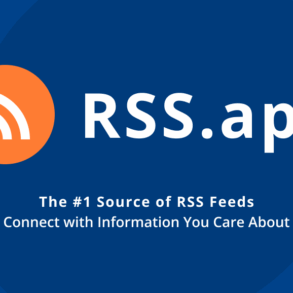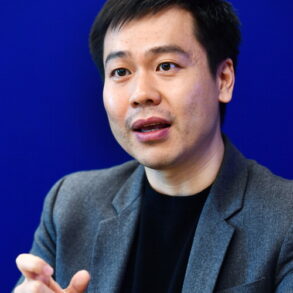Opinion
Meta says yes. A US regulator says: how convenient. But, whether it serves his interest or not, does Mark Zuckerberg have a point?
In case you missed my previous article, this column has a new format. I ask a question and invite readers to answer it, then I report on what the answers are in the next edition. All caught up? Let’s go…
Last week, Meta said something that, on the face of it, should be astounding: all social apps are now basically the same.
That’s the core of its defence in the US Federal Trade Commission (FTC) antitrust trial. TikTok is Facebook is YouTube is iMessage. A cynic might say Meta is trying to blur the line between competition and copy-paste.
But what if Meta is right? Or, at least, right enough for the courts?
Meta’s defence: If everyone copies, no-one dominates
Meta’s argument is that it doesn’t have a monopoly; just a head start.
It claims social apps all offer the same things: short-form video, feeds, messaging and content discovery.
The reasoning? Everyone copies everyone. Meta cloned Stories from Snapchat. Reels from TikTok. Threads from Twitter (sorry, X). That’s not anti-competitive, it argues, that’s innovation.
It even pulled out data from a TikTok outage: Facebook usage spiked. Proof, it said, that users see all these platforms as interchangeable.
But when all the features are the same, competition doesn’t thrive. It gets absorbed before it ever gets started.
FTC says Meta killed the future
The FTC disagrees. Vehemently.
It says Meta didn’t just buy Instagram and WhatsApp to improve them. Meta bought them to kill future rivals. In Mark Zuckerberg’s own words, “neutralise” potential competitors.
Meta is focused on a specific market: personal social networking services (PSNs). Apps where users connect with friends, share in a feed and mutually follow each other.
TikTok? Not the same… it’s broadcast. YouTube? Also broadcast. And iMessage? Messaging only.
So, by this definition, Facebook and Instagram dominate PSNs. And they’ve used that dominance to jack up ad loads, raise prices and smother innovation.
The real harm, the FTC argues, is what didn’t happen. Because Meta bought the future and buried it.
Free doesn’t mean harmless
Meta also wheeled out the modern-classic mantra of Big Tech: “We can’t be a monopoly; we’re free!”
Yes, Facebook and Instagram are free to use. But not free of consequences.
Meta doesn’t control your wallet. It controls data. Distribution. Discovery. The entire shape of your online experience.
Yes, its ads are monetisation. But advertisers don’t get a fair fight; they get whatever price Meta sets. That’s not a market. That’s rent-seeking with a blue thumbs-up button.
And, no, “just scroll past” isn’t a valid defence. It’s an insult.
Are the apps really indistinguishable?
Functionally, yes, they feel the same. But culturally, strategically, economically? Not even close.
TikTok isn’t a PSN. Threads isn’t Instagram. YouTube isn’t a messaging app. Meta wants you to think they’re all alike, because if everything’s the same, no-one can be blamed for winning.
But Meta didn’t win on product, the FTC is arguing. It won on power: data, capital, lawyers, acquisitions. This is why this FTC trial is so important: if content is king, then distribution is God.
Smartphones are not the same as televisions just because they look like black boxes with colour screens. It’s the way content is distributed via a single monopoly network that matters; not that the content itself comes from billions of users instead of a handful of broadcasters.
Whether or not the social media market is indistinguishable, it didn’t happen by accident. It’s indistinct because Meta made it that way.
What do you think?
To respond to today’s question or suggest the next one, leave a comment below.
Last edition’s question: Should clients still pitch indies against holdcos?
Most believe, as I asked last time, that pitching is no longer a fair fight between network agencies and independents.
Maybe it never was.
The core problem is that most clients don’t know whether they’re looking for a strategy partner or a media wholesaler.
According to media investment consultant Peter D’Eugenio, that confusion is at the heart of why indie versus holdco briefs keep happening. Large advertisers want scale, but smaller ones need something different: hands-on service, consulting firepower and proof that the plan is doing more than just hitting volume targets.
And yet, pitchlists keep blending both together. Why? Because clients don’t always understand what they’re buying. They default to “invite everyone and sort it later”.
This is where James Robinson, managing director at indie agency Hello Starling, sees the real risk. Holding companies, he argues, are incentivised to move inventory, not build the best plan. Their commercial structure rewards volume over value. That’s only getting worse with the rise of “inventory media”, where the agency sells you space it’s already bought.
“You can buy bulk media,” he says, “but what are you really buying?”
Can you afford to be selective?
It’s not just a philosophical difference. It’s structural.
Indies aren’t tied into volume deals or rebate schemes. That means they can build campaigns that fit the brand, not just clear the shelves.
But this advantage comes with risk. Especially for indies.
As David Gaines from Media by Mother points out, resource-constrained agencies can’t afford to chase every pitch. They have to be selective. And that means interrogating the brief, not just accepting it.
“Ask what the client really wants,” he says. “Smart strategy or a tech stack?”
The deeper issue, though, may not be about who gets pitched — it’s how pitches work in the first place.
Charlie Makin, co-founder of Be Addressable, argues that the format is broken. Pitches are theatre. Agencies present to a scorecard. Clients judge performance, not capability. The result? You might win by dazzling the room but come unstuck in delivery. Meanwhile, a strategically smart but less flashy agency walks away empty-handed.
There’s also the reality that pitchlists aren’t being curated by consultants any more. As Croud’s EMEA growth lead James Wilde notes, clients are DIY-ing the whole process: finding agencies via LinkedIn, Google or even ChatGPT. That means indies and holdcos end up on the same list by default, not by design.
So should indies and holdcos ever compete in the same pitch?
Sometimes. But only if the client truly understands what each one brings. And structures the brief accordingly.
If not, what looks like a competitive process is really just a confused one.
So should clients still pitch both?
Sometimes. But only if the brief (and the business) makes sense of it. If it doesn’t, you’re not running a pitch. You’re running a guessing game.
And if you’re an indie? Don’t just say yes. Say: why now, why us, why this?
 Omar Oakes was founding editor of The Media Leader and continues to write a column as a freelance journalist and communications consultant for advertising and media companies. He has reported on advertising and media for 10 years and was previously media and tech editor of Campaign. His column on The Media Leader was nominated for the BSME’s B2B Column of the Year in 2024.
Omar Oakes was founding editor of The Media Leader and continues to write a column as a freelance journalist and communications consultant for advertising and media companies. He has reported on advertising and media for 10 years and was previously media and tech editor of Campaign. His column on The Media Leader was nominated for the BSME’s B2B Column of the Year in 2024.
This post was originally published on this site be sure to check out more of their content







